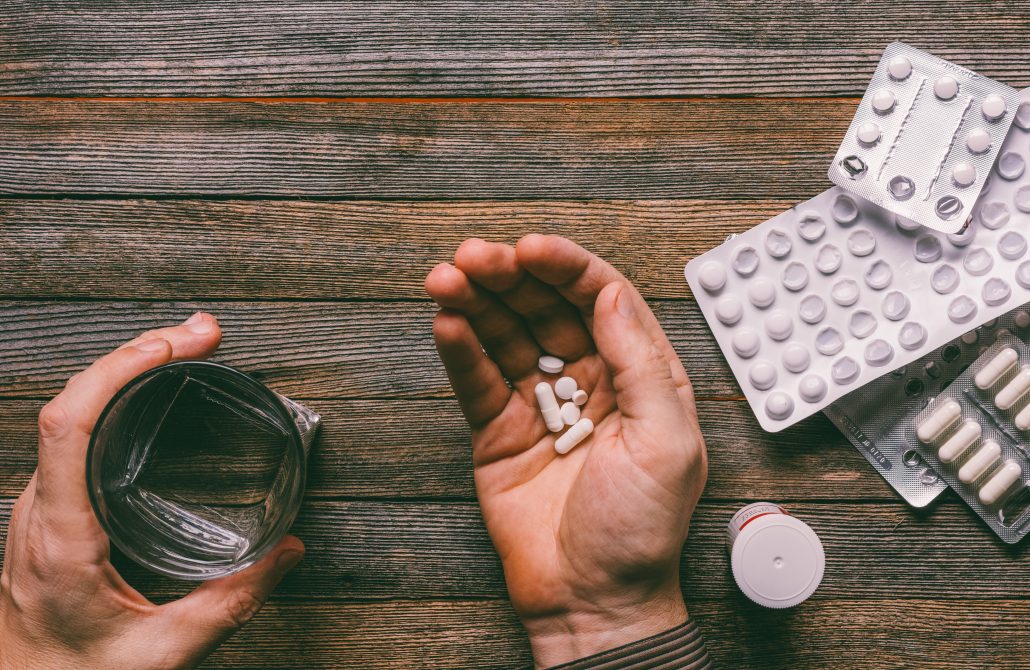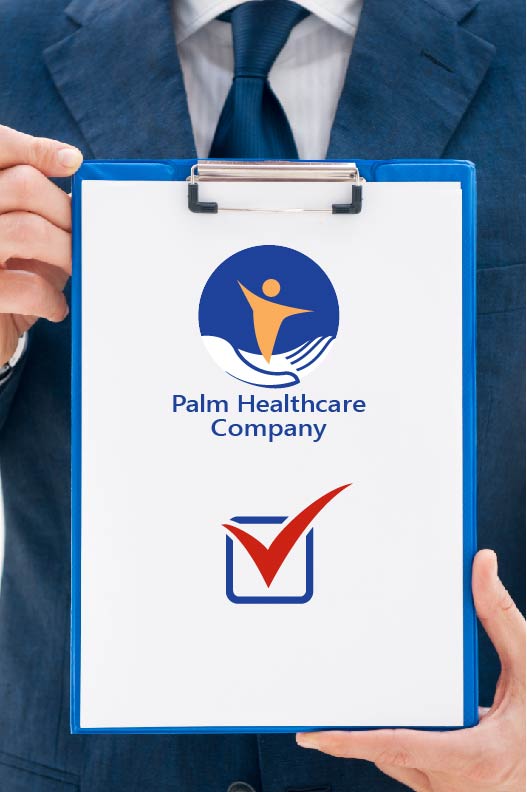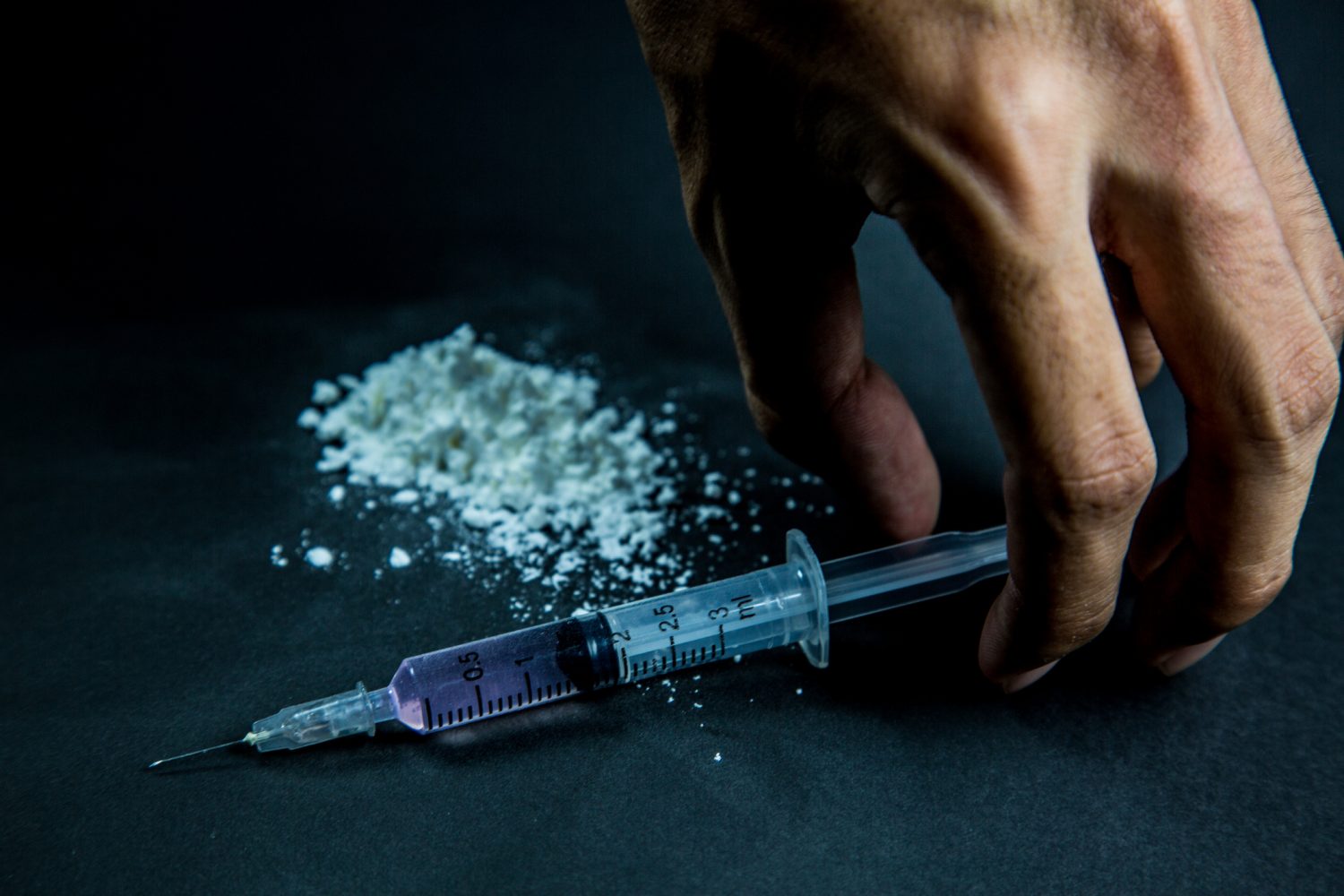by Justin Mckibben | Jan 19, 2018 | Anxiety Disorder, Coping Skills, Dual Diagnosis, Mental Health, News, Opioids, Prescription Drugs, Suicide

Over the last 15 years, the suicide rate has climbed by an estimated 32%. While the overdose deaths in relation to the opioid crisis have become a constant issue around the country, some researchers suggest that the real suicide rates are even higher, but some of them are being misclassified as overdoses.
So, are more people dying due to drug abuse, or are more people taking their own lives using powerful street drugs and prescription narcotics?
Studying Suicide and Drugs
The idea that many of the deaths recorded as opioid overdoses may have been suicides, according to the researchers, is due to a significant gap between suicide rates and intoxication mortality rates.
A study from the Luskin School of Public Affairs at the University of California, Los Angeles, was published in the journal PLOS One. This study states that both suicide and drug intoxication death rates in the United States have risen over a period of 15 years. Researchers compiled data from the Center for Disease Control and Prevention (CDC) to show:
- 2000- The suicide rate was 10.40 per 100,000 people
- 2015- Suicide rate rose to 13.75 deaths per 100,000 people
- 2000- Drug intoxication mortality rate for those over the age of 15 was 7.81 deaths per 100,000
- 2015- Drug intoxication death rate for those over the age of 15 rose to 20.07 per 100,000 in 2015
This means that the drug intoxication death rate rose by 257% in those 15 years, while suicide rates only rose by 32%. While 32% is still a devastating number when it comes to such a tragic circumstance, there is still a huge difference between 32% and 257%. These researchers believe this major difference in the reports of mortality rates suggests a lack of suicide reporting.
Difficulties in Death Investigation
One of the big problems, according to the study’s author Mark Kaplan, is resources. Kaplan is a professor of social welfare at UCLA, and he stated to local news sources,
“Unfortunately, part of the problem is due to serious under-resourcing of state and local death investigation systems throughout most of the U.S.
“Many of these deaths were probably suicides, yet reported as accidental self-poisoning rather than intentional self-harm, particularly among the middle-aged.”
The study by Kaplan and his colleagues further explains that when it comes to suicide by overdose, things like an individual’s psychiatric history or the presence of a suicide note are crucial to helping professionals identify a death as a suicide.
“A suicide note, prior suicide attempt or affective disorder was documented in less than one-third of suicides and one-quarter of undetermined deaths,”
“Our incorporation of undetermined deaths, as well as registered suicides, not only provided a window on the nature of suicide misclassification within the undetermined death category but within the accident category—as a much larger reservoir for obscuring drug intoxication suicides.”
So by acknowledging that there is not always an obvious indication that a death is a suicide, even in cases that are classified in suicide, the researchers believe that many deaths that involved drugs have most likely been categorized as overdoses instead of making a deeper inquiry into the circumstances surrounding an individual’s death.
Opioids Causing Ambiguity
With the opioid crisis in America, it has become even more difficult to measure the suicide rates. And that isn’t just this research teams opinion either.
In 2015, the CDC hosted a meeting to address the challenges presented for medical examiners and coroners across the country. The primary focus was concerning cases of fatal intoxication due to opioids and other drugs. The summary of this meeting concluded that drug intoxication deaths may be among the most difficult to determine regarding the manner of death. The summary notes that reasons for such difficulty in having a more accurate manner of death include:
- Potentially equivocal evidence
- Intent to die
- Overlapping demographic groups affected
- Overlapping premorbid risk factors (e.g., substance abuse, mental health problems).
Opioid addiction, much like any other form of substance use disorder, is often closely connected to other issues, including anxiety, trauma and mental health disorders. Some individuals living with mental health conditions who abuse opioids may be self-medicating and accidentally overdose. But others may be suffering so severely, with conditions like depressive disorders or bipolar disorder, that they ultimately take their own lives intentionally with the powerful drugs. With opioid abuse being so widespread and devastating, the line between the two has begun to blur.
Both studies mentioned clearly indicate in order to truly comprehend an accurate number of suicides by overdose, more research is needed. Both also admit that the number may never be exact.
Even though we will probably never have a definitive answer, the question is still important to ask. By knowing whether opioid deaths are caused by accidents or intentional we can develop better strategies to provide education and prevention.
This is also why mental health should always be a priority when it comes to addiction treatment.
Substance use disorder and suicide are both connected to mental health and personal wellness. Too often they both lead to avoidable tragedies. Therefore, mental health and wellness should be a priority for addiction treatment. If you or someone you love is struggling with substance abuse or addiction, please call toll-free now.
CALL NOW 1-888-922-5398
by Justin Mckibben | Jan 9, 2018 | Addiction Stigma, Drug Abuse, Opioids, Prescription Drugs, Professionals, Stigma

(This content is being used for illustrative purposes only; any person depicted in the content is a model)
The opioid crisis has affected every community in America. Opioids affect rural working class people, those in the inner city and suburbs, or even the wealthy and well-to-do professionals. While drug abuse in business has been highlighted in blockbuster films like the Wolf of Wall Street, the current reality is not far from it. According to addiction experts, substance use disorder is making a sobering impact on the financial industry.
This comes from not just an upscale partying lifestyle, but also from drugs used to manage performance and stress, along with physical pain. According to addiction experts, the financial industry itself is actively turning a blind eye to the issues concerning opioid abuse on Wall Street because money is still the priority, and stigma still gets in the way.
Opioids on Wall Street: White-Collar Confessions
As it stands there is no comprehensive research that takes a detailed look at opioid abuse in Wall Street among finance professionals. So we can’t exactly show the numbers to prove it’s prevalence. However, what we see consistently is a dramatic increase in addiction and overdose rates all over the nation in recent years.
Luckily, professionals from this demographic are beginning to speak out in hopes of progressive change.
One such individual is Trey Laird, a former Wall Street trader, who recently spoke to CNBC about his six-year opioid addiction. During the conversation Laird reiterates the critical understanding that substance use disorder can reach anyone, saying:
“Addiction pervades every single socioeconomic demographic that there is. Every industry, every race, men, women. It doesn’t care who you are,”
After getting clean himself, Laird went on to open a sober living community and says he hopes to specifically serve the Wall Street and white collar demographic.
According to Laird, there has been more talk about opioid addiction among people in higher socioeconomic brackets, but there is still much work that needs to be done. He acknowledges that increasing awareness is doing a great deal, but that the problem is also at an increase. Wall Street may finally be talking about it, but how many professionals will get the help they truly need?
Opioids on Wall Street: Stocks and Stigma
One of the biggest obstacles facing white-collar workers like those in Wall Street is the engrained stigma still attached to addiction. Even with all the shifts in our culture toward a better understanding of substance use and the compassion for those struggling, professionals still have this seemingly unbearable hurdle in front of them.
Truthfully, stigma is something that prevents most people from getting help. Professionals will often be too afraid of losing their jobs to admit they need help. Many in the world of Wall Street and finance may have no information on how to seek out treatment while adhering to their professional boards’ guidelines and business practices.
With white-collar workers, this may be an especially difficult thing because the idea of addiction is so often attached to stereotypes of the unemployable, the homeless, the unreliable and unstable that their high-earning careers might minimize the impact drugs have on their lives. Wall Street stockbrokers and traders might not see themselves as having a problem as long as they can function, which brings in the idea of the “functioning addict.”
Opioids on Wall Street: Function Addiction is Still Addiction
Many white-collar workers who struggle with drugs or alcohol may consider themselves a “functioning addict”, meaning they are less likely see their actions as a problem because they are able to maintain their professional or even personal lives. To make matters worse, frequently the people around someone who is professionally successful will not believe the addiction is real. They may admit that you’ve been careless or destructive in some respects, but will ultimately minimize it due to your financial stability.
As long as you’re making money and paying the bills how could you possibly be “that bad?”
Well, because “functioning addiction” is still an addiction.
Addiction isn’t about whether or not you are able to hold down a steady income. It does not depend on whether or not other people recognize that you have a problem or your competence with your profession. While addiction can and will have an impact on these things, it isn’t always as black and white as most people like to pretend.
Notice how earlier we said you may “maintain” other areas of your life? Well, we mean to say that you can get by for a while, but eventually, the effects of addiction will catch up with you. It could be in the form of serious health consequences or other devastating circumstances. It could take days, months or even years, but it will leave a mark.
Sadly, “functioning addicts” are also far less likely to get the help they desperately need.
Opioids on Wall Street: It Could Be You
While you might be able to keep your addiction secret, in the beginning, things will eventually get worse. Eventually, your addiction will become unmanageable.
If you think you might fit the “functioning addiction” criteria, look at the following questions and answer them honestly.
- Do you often think about using drugs or drinking?
- Do you find it hard to stop after you start drinking or using?
- Are you scheduling your time around drinking or using drugs?
- Have you tried to stop before, but found that you were unable to?
- Do you drink or use drugs first thing in the morning?
- Are you drinking or using drugs at work?
- Do you hide your drug use or drinking?
- Have you done something risky, like driven drunk?
- Do you worry about your drug use or drinking?
If you find you are answering “yes” more than “no” then you should seriously consider speaking with a medical or addiction professional about your drug use or drinking.
The opioid crisis is nothing to be ignored. Despite all that we think we have learned about addiction too many professionals don’t get the help they need. No one is exempt from the destruction of addiction. Opioids don’t care what street you work on, Wall Street or not, they can ruin your life all the same. If you or someone you love is struggling, please call toll-free now. We want to help.
CALL NOW 1-888-922-5398
by Justin Mckibben | Jan 3, 2018 | Addiction, Addiction Treatment, Donald Trump, Drug Abuse, Drug Policy, Dual Diagnosis, Family, Fentanyl, Inpatient Treatment, Law Enforcement, Mental Health, News, PAARI, Prescription Drugs, Professionals, Recovery, Sobriety, Stigma, Synthetic Drugs

With the beginning of the new year, Palm Healthcare Company is looking forward to helping spread more exciting stories of experience, strength, and hope while also sharing important news stories and exciting new developments that relate to the world of addiction recovery and substance use disorder treatment. As we commit ourselves to another year of fighting alongside thousands of people working toward a better future, we would also like to take some time looking back on all the big moments in 2017 that we shared with our Palm Healthcare Company Blog.
-
President Trump Declares Public Health Emergency: What’s the Plan?

October of 2017, President Donald Trump made an announcement declaring the opioid crisis in America as a Public Health Emergency. This highly anticipated declaration was delivered in a way slightly different than many had expected, noting the technical differences between a Public Health Emergency and a National Emergency.
Many advocates were concerned that this announcement did not provide a concrete foundation for the necessary federal funding and did not initiate much-needed action, but others we assured that this means the Trump administration was taking this issue very seriously. In this article, we took a look at what this announcement did actually accomplish, and what it failed to deliver on.
-
Racketeering for Fentanyl: Opioid Maker Insys Founder Arrested for Bribes

A huge development to another story came in late 2017 when John Kapoor, former CEO of Insys Therapeutics and founding father of one of the most prominent opioid manufacturers in the country, was arrested and charged with conspiring to push the signature drug of Insys Therapeutics, a Fentanyl spray called Subsys, for unacceptable uses through bribes and kickbacks.
The Palm Healthcare Company blog notes how back in 2016 the Justice Department reported to be charging 6 former executives and sales-managers of Insys Therapeutics for conspiring to defraud health insurers.
When looking at the details in this story, it has intensified the conversation about Big Pharma involvement in the epidemic
-
Can Kellyanne Conway Really Compete with the Opioid Crisis?

Not too long after President Trump’s declaration of a Public Health Emergency pertaining to the opioid crisis, Kellyanne Conway was announced as leading the charge on the White House’s efforts for addressing the opioid epidemic.
This Palm Healthcare Company blog saw a lot of comments!
While some find that having a high-profile figure at the head of the efforts gives validity to the White House’s commitment to solving the opioid issue in America, many others are speaking out in frustration. Those in opposition to this appointment say that while she may be useful as a counselor or pollster, she has no experience of expertise when it comes to drug abuse, addiction or substance use disorder treatment.
Thus far the one thing both Kellyanne and the President seem adamant about is a media campaign, but advocates are still afraid this is more “Just Say No” and not enough support for effective resources.
-
After Las Vegas Shooting: PTSD and Mental Health Must be Priority

In early October of 2016, the nation was shaken to its core when Las Vegas had one of the deadliest shootings in modern American history. This horrific tragedy flooded newsrooms and live viral footage with the country watching in shock as a gunman killed 58 people and injured 546 more at an outdoor music festival.
In the aftermath of this terrible and heartbreaking incident, our Palm Healthcare Company blog took a look at how such traumatic experiences impact people, and about the importance of those who struggle with Post-traumatic Stress Disorder (PTSD) getting proper diagnosis and care.
At a time when so many people are self-medicating with dangerous or even deadly narcotics, it is important to care for those most vulnerable, especially after such an earth-shattering experience.
-
Police Helping Addicts into Treatment is a Growing Trend Saving Lives

In August of 2017, we took a look back at several programs that had come to light all over the country based on Police Departments working with their communities to offer drug users the chance to get help with addiction treatment instead of being arrested and charged.
The pioneering program came from Gloucester Police Department in Massachusetts back in 2015. This program allowed users to ask police for help, and told addicts they could submit drugs to local law enforcement without fear of being arrested if they were willing to seek treatment. A 2016 study showed that this program was experiencing some impressive success.
Police departments in a number of other states were inspired by this and took up similar programs as a way to help their communities fight the addiction outbreak.
The Palm Healthcare Company blog took a close look at a handful of these programs to celebrate their compassion and success.
-
Sterilized for Cash: This Woman Pays Drug Addicts to Not Have Kids

Pregnant lady’s stomach and her hand holding dollar over black background
When we posted this Palm Healthcare Company blog we saw a great deal of debate in the comments on our Facebook. For over 20 years, Barbara Harris has driven across the country using cash to ask addicted women to give up their fertility. To date, the organization has paid over 7,000 people.
The controversy around such a powerful story had some people showing a great deal of support for someone giving addicted women an incentive to not get pregnant, while other people were appalled and angered that someone would entice desperate women who are not in the right mindset to make such dramatic and life-altering decisions with their bodies.
-
What Chester Bennington Taught Us about Addiction and Depression

(This content is being used for illustrative purposes only; any person depicted in the content is a model)
In July of 2017, the world lost a great artist and inspirational musician with the death of Chester Bennington, the lead singer of the band Linkin Park.
Initial reports were that Bennington had died from suicide by hanging, with later reports indicating that Chester had been drinking at the time of his death. The vocalist had been open about his struggles with depression and drug addiction over the years, and in this article, we took a look at just how much Chester Bennington could teach us about the devastation of depression and addiction.
-
Dear Media, Thank You for Bad Press

South Florida has been under a great deal of scrutiny recently, specifically concerning the issues facing the recovery community such as unethical and illegitimate sober home operators in the area. In June, there was a Megyn Kelly NBC News Investigation which focused in on Delray Beach, Florida and some of the big problems concerning unscrupulous activities from corrupt individuals exploiting drug addicts in need of help.
We took this time to look over some of the bigger stories concerning the illicit activities in South Florida with the recovery industry while showing support and gratitude for all those working together to try and put an end to operators who are taking advantage of people in need of help.
-
Palm Healthcare Measures Up to Addiction Treatment Outline for EAP

In September of 2017, we took a very close look at an article written by the Journal of Employee Assistance that was designed to help Employee Assistance Programs (EAPs) find the right kind of addiction treatment programs to recommend to their clients.
The outline given for EAPs to find effective and reliable addiction treatment options gives a list of things to look for. The Palm Healthcare Company blog was happy to show off just how all of our facilities measure up to these crucial standards.
Keep an Eye Out for More
Palm Healthcare Company continues to try and share every treatment development, news story or exciting innovation on our blog to not only help more people learn and raise awareness but to offer some perspective and maybe ask some new questions.
Whether it is sports, celebrities, news or politics we are committed to talking about important stories that pertain to drug policy in America, substance use disorder, mental health, and personal wellness. We will continue to touch on the top stories of 2018 to spread the word and hopefully inspire more people to get involved in these crucial conversations.
2017 was an intense, innovative and inspiring year. Here is to hope for 2018.
Holistic addiction treatment means incorporating every aspect of life for each individual with personalized opportunities for lasting recovery. So every bit of information can help anyone make a more comprehensive decision about what kind of recovery plan they want. If you or someone you love is struggling, please call toll-free now.
CALL NOW 1-888-922-5398
by Sher Delva | Sep 7, 2017 | Addiction, Addiction Stigma, Drug Abuse, Withdrawal

If you think heroin is the deadliest opioid in America, think again. While that might have been the case in the past, things have taken a major shift over the past few years.
Heroin led to nearly 16,000 deaths last year, but another popular opioid surpassed that tragic number.
If you have not guessed already, we are talking about fentanyl.
Fentanyl is an opioid that is over a 100 times stronger than street heroin. To put that into perspective, transdermal fentanyl is 100-150xs more potent than oral morphine and is often prescribed to treat advanced cancer patients.
Drug overdose deaths involving fentanyl doubled during 2016, accounting for 25% more deaths than heroin, according to data released by the Centers for Disease Control and Prevention (CDC) earlier this week.
In 2016, the data revealed that 64,000 Americans died of drug overdoses. Out of this number, 20,100 deaths were attributed to fentanyl and other synthetic opioids. If we compared those numbers to heroin deaths, that’s an almost 5000 person difference!
The recent data also reveals how unevenly drug deaths are spread throughout the country:
- In states like Delaware, overdose rates rose 71% between 2016 and 2017 (with 309 deaths during the year).
- Maryland had an increase of 67% for a total of 2,171 overdose deaths.
- Of the states that reported data, only Nebraska, Washington and Wyoming saw a decrease in overdose deaths over the past year.
Fentanyl has been getting a great deal of attention as the drug is responsible for the massive increase in overdose fatalities. For example, last year in Massachusetts, 69% of people who died of an opioid overdose (and had a toxicology screen) had fentanyl in their systems, according to the Boston Business Journal.
Furthermore, in Ohio, fentanyl killed nearly 2,400 people in 2016, which is double the number in comparison to the year prior, according to Cincinatti.com
“It truly is everywhere,” Barbara Carreno, a spokeswoman for the federal Drug Enforcement Agency (DEA), said to USA Today.
Education is Key
Over the summer, the DEA worked to educate first responders about the dangers of fentanyl and other synthetic opioids like carfentanil and acryl fentanyl. These synthetic opioids are strong enough to make even the most casual user overdose and pose a severe threat.
Despite the dangers of addicts receiving a potentially fatal drug, law enforcement officials say the demand for fentanyl continues to rise. This is because fentanyl boost profits for dealers to sell the drug as heroin.
“You can make it as strong as you want, and in bulk and fast,” said Tim Reagan, a DEA agent in Cincinnati.
Still, law enforcement expects fentanyl seizure to become more of the norm at the end of this year.
“I expect that in fiscal year 2017, the numbers of seizures in the mail and express consignment environment (such as FedEx and UPS) will be much higher than they were last year,” said Robert Perez, an acting commissioner with the U.S. Customs and Border Protection (CBP) agency.
Where is it coming from?
Fentanyl is coming from a variety of locations, but one main target is China. China has been singled out as the main source of synthetic opioids like fentanyl. Through the dark web, drug dealers are able to purchase fentanyl from websites hosted in China. They then have shipments sent to the US.
According to the US Customs and Border Protection (CBP), seizures of fentanyl arriving by mail have increased significantly:
- In 2011, 0.09 kilograms of fentanyl were seized by mail
- In 2016 it rose to 37 kilograms
Unfortunately, officials in the United States are expecting the worse when it comes to the opioid crisis. Experts are looking at current trends, and most believe the opioid crisis will get worse before it gets better.
Did you know the major impact fentanyl was having on the opioid crisis? Sadly, when it comes to using drugs, your next high could be your last. Therefore, make a choice to recover from addiction today. Tomorrow may be too late. Do not wait. We are waiting for your call. Call now.
CALL NOW 1-888-922-5398
by staff | Aug 8, 2017 | Death, Fentanyl, Heroin, Naloxone, Narcan, Opioids

If you believe you or someone else is experiencing fentanyl overdose symptoms, please call 911 right away. Fentanyl is an extremely potent potentially fatal drug and should not be underestimated.
Fentanyl, also known as fentanil, is an incredibly potent synthetic opioid pain medication with a rapid onset and short duration of action. This drug is considered to be around 50 to 100 times more potent than morphine, while some fentanyl analogues such as carfentali, which are designed to mimic the pharmacological effects of the original drug, may be as much as 10,000 times more potent than morphine. Fentanyl brand names include:
- Actiq
- Duragesic
- Fentora
- Sublimaze
Individuals who abuse opioids, particularly heroin, are more likely to ingest fentanyl, knowingly or unintentionally. This puts them at an even higher risk of overdose.
In 2015 alone, 33,091 people died due to overdose on opioids like fentanyl.
Learning how to recognize the indications of a fentanyl overdose and getting professional substance abuse treatment may save a life.
Fentanyl Overdose Symptoms: Side Effects of Fentanyl
As an extremely potent opioid drug, fentanyl is very carefully prescribed and dosed by medical professionals. Those who abuse fentanyl may use the drug outside of prescription guidelines or without a prescription altogether, which can drastically increase their risk of lethal overdose.
Fentanyl’s most common side effects of Fentanyl use include
- Asthenia(weakness)
- Diarrhea
- Nausea
- Constipation
- Dry mouth
- Somnolence
- Confusion
- Sweating
Some of the less common side effects of Fentanyl use include:
- Abdominal pain
- Anxiety
- Depression
- Anorexia and weight loss
- Headache
- Fatigue
- Dizziness
- Nervousness
- Hallucinations
- Flu-like symptoms
- Dyspepsia(indigestion)
- Dyspnea (shortness of breath)
- Hypoventilation
- Urinary retention abuse
Fentanyl Overdose Symptoms: Risks of abuse
With a powerful drug like fentanyl the risk of abuse is exceedingly high, especially considering the drug’s medical use is so limited to treating extreme cases. So when people take fentanyl in higher doses or more frequently than prescribed it of course elevates their risk for serious side effects and experiencing fentanyl overdose symptoms.
As far as recreational use, fentanyl is extremely dangerous. Using this drug in any way other than intended, such as snorting or injecting it, is not only illicit abuse of the chemical, but potentially life-threatening. In recent years drug dealers have been mixing fentanyl powder with heroin to increase potency or compensate for low-quality heroin. This illegally manufactured, non-pharmaceutical fentanyl cut into other substances caused an outbreak of overdose deaths in the United States and Canada over the past several years.
Combining fentanyl with other drugs can have effects that either compound the already severe side effects of fentanyl or contradict the effect and cause more chaos in the body. Using fentanyl with other substances is very hazardous, especially with drugs such as:
- Alcohol
- Stimulants
- Benzodiazepines
- Antidepressant medication
The Center for Disease Control and Prevention (CDC) conducted a study recently that showed:
- 82% of fentanyl overdose deaths involved illegally manufactured fentanyl
- Only 4% were suspected to originate from a prescription
National Forensic Laboratory Information System reported:
- 942 fentanyl seizures in 2013
- 3,344 fentanyl seizures in 2014
Fentanyl Overdose Symptoms: Signs to Look For
Being able to address a possible overdose means being able to recognize and understand some of the possible fentanyl overdose symptoms. While one of these may not be a definite indication, noticing a combination of symptoms may be a more serious issue.
A person experiencing fentanyl overdose symptoms may present with the following overdose signs:
- Pinpoint pupils
- Pale skin
- Nausea
- Choking sounds or gurgling/snoring noises
- Weak muscles
- Dizziness
- Confusion
- Extreme sleepiness
- Very low blood pressure
- Dangerously slowed or stopped breathing
- Blue skin tinge nails and lips
- Loss of consciousness
- Intensely slowed heart beat
- Coma
- Seizure
- Death
The effects of fentanyl overdose symptoms on an individual’s respiratory system and heart rate are the most serious relating to risk of death or permanent damage. Not only can this lead to coma or death, but even after surviving the overdose there can still be complications.
If not treated immediately, the impact of fentanyl overdose symptoms on the heart and respiratory system may cause residual problems such as permanent brain damage.
Fentanyl Overdose Symptoms: How Much Is Too Much?
It is difficult to determine the exact dose it would take for someone to experience fentanyl overdose symptoms. According to some medical professionals, 250 micograms of fentanyl might represent a lethal dose of fentanyl. However, most individual’s using heroin and other drugs are unaware that they have ingested the drug at all, let alone know how much fentanyl is in the doses.
At the end of the day, fentanyl overdose symptoms can vary depending on the individual, and the amount it takes to overdose will vary to. Some elements that impact the odds of overdosing includes:
- Other drugs taken
- Height
- Weight
- Age
- Physical condition
In the event of an overdose of fentanyl you should seek immediate emergency medical assistance. Some cases require several doses of Narcan (Naloxone), the opioid overdose antidote, to stabilize the individual suffering from an overdose. Even if you have access to Narcan or Naloxone yourself, always contact emergency medical services to get assistance, because when the antidote wears off the overdose could return, or there may be other severe complications.
Opiate medications and street drugs have done a great deal of damage these past few years. Synthetic opioids like fentanyl have raised the risks and increased the death rates in a big way. Far too many lives are ruined, or brought to an abrupt end, because of overdoses when there is real help out there. Don’t wait until after an overdose. If you or someone you love is struggling with substance abuse or addiction, please call toll-free now.
CALL NOW 1-888-922-5398















